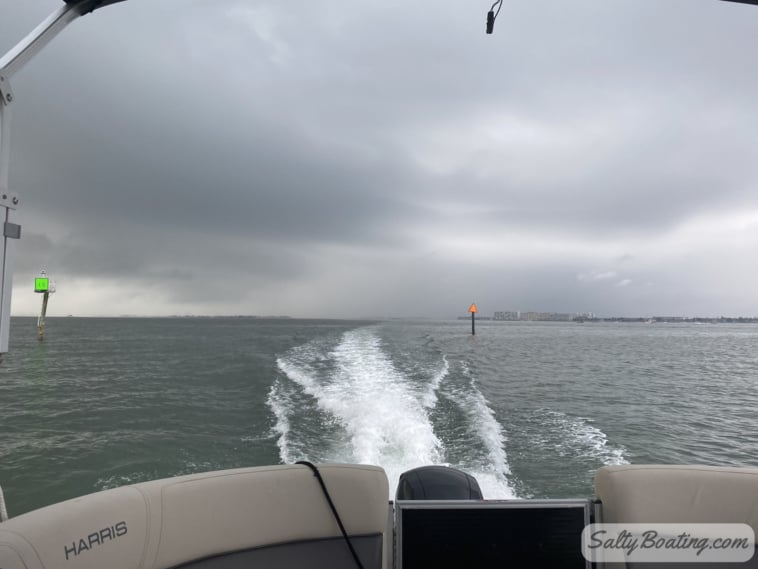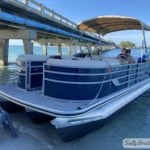During rough weather conditions, it is crucial to prioritize safety by taking certain precautionary measures. Whether you find yourself in the middle of a thunderstorm, blizzard, or hurricane, being prepared and aware can make all the difference. By staying informed about weather forecasts, securing your property, creating an emergency kit, and seeking shelter in a sturdy structure, you can safeguard yourself and those around you from potential harm. In this article, we will explore various safety measures that you should follow when faced with rough weather conditions to ensure your well-being. Rough weather conditions can be unpredictable and potentially dangerous, so it’s important to be prepared and take necessary safety measures to protect yourself and your loved ones. Whether it’s lightning storms, thunderstorms, hurricanes, heavy rains, extreme heat, blizzards, tornadoes, dust storms, or even tsunamis, there are specific precautions you can take to stay safe. Let’s take a closer look at each of these weather conditions and the safety measures you should follow.
Preparation before rough weather conditions
Monitoring weather forecasts is crucial in preparing for rough weather conditions. By staying informed about the weather patterns and any potential storms or severe conditions, you can plan accordingly and take appropriate precautionary measures.
Creating an emergency plan is essential for any rough weather situation. Discuss with your family or household members about what actions to take in different scenarios. Identify safe places to seek shelter, establish communication methods, and assign responsibilities to everyone. This will ensure that everyone is on the same page and can act quickly and efficiently when needed.
Ensuring a reliable communication method is vital during rough weather conditions. Make sure you have a fully charged cell phone, spare batteries, or power banks. It’s also a good idea to have a backup communication plan, such as a walkie-talkie or a battery-operated radio, in case cell phone service is disrupted.
Securing important documents and valuables is a precautionary measure that often gets overlooked. Keep your essential documents, such as identification papers, insurance policies, and important contact information, in a waterproof and easily accessible container. Consider storing valuable items in a secure location, or take them with you during evacuations if necessary.
Safety measures for lightning storms
Lightning storms can be incredibly dangerous due to their unpredictable nature and the risk of lightning strikes. Here are some important safety measures to follow during lightning storms:
Stay indoors and avoid venturing outside during a lightning storm. Seek shelter in a sturdy building, such as a house or a public facility. Do not seek shelter under tall trees or structures that may attract lightning strikes.
Avoid using electronic devices, such as computers, televisions, or corded phones during lightning storms. They can conduct electricity and increase the risk of injury.
Unplug appliances and electronic devices to prevent damage from power surges that can occur during lightning storms.
Stay away from windows and doors to minimize the risk of injury in case lightning strikes nearby. Lightning can travel through conductive materials, such as metal frames or wiring, leading to potential harm.
Safety precautions during thunderstorms
Thunderstorms often accompany lightning, bringing strong winds, heavy rain, and sometimes hail. Follow these safety precautions during thunderstorms to stay safe:
Seek shelter in a sturdy building or a fully enclosed vehicle. Open structures, such as sheds or tents, do not provide adequate protection from lightning strikes or strong winds.
Avoid open areas, such as parks or fields, as they offer little to no protection from lightning or falling debris.
Stay away from electrical equipment, such as power lines or electrical transformers. Any contact with these can cause electric shock or even electrocution.
Postpone outdoor activities until the thunderstorm has passed. It is better to wait for a safer time when there is no risk of lightning or other hazards associated with the storm.
Safety guidelines for hurricanes
Hurricanes are powerful tropical storms that bring heavy rain, strong winds, and storm surge. Follow these safety guidelines to stay safe during hurricanes:
Evacuate if instructed to do so by local authorities. Pay close attention to evacuation orders and be prepared to leave your home if necessary. Follow designated evacuation routes and stay in designated shelters.
Secure windows and doors to protect your home from strong winds and potential flying debris. Use storm shutters, plywood, or other materials to reinforce them.
Stock up on necessary supplies, such as non-perishable food, water, medications, and emergency equipment like flashlights and batteries. Be prepared to be self-sufficient for several days.
Stay away from flood-prone areas, such as low-lying regions or near rivers. Heavy rainfall and storm surge can lead to significant flooding, which can be extremely dangerous.
Preventing accidents during heavy rains
Heavy rains can cause flooding, reduced visibility, and hazardous road conditions. Here are some precautions to prevent accidents during heavy rains:
Avoid flooded roads as the depth and strength of the water may be deceptive. Even a few inches of fast-moving water can sweep away vehicles.
Maintain a safe driving distance from the vehicle ahead, as slippery roads reduce braking efficiency. It takes longer to stop or slow down on wet pavement.
Check tires and brakes regularly to ensure they are in good condition and properly functioning. Adequate tire tread depth is crucial for maintaining traction on wet surfaces.
Use headlights and windshield wipers during heavy rains to improve visibility for yourself and other drivers. This will help you see the road ahead and make your vehicle more visible to others.
Safety measures for extreme heat
Extreme heat can lead to heat-related illnesses, such as heat exhaustion or heatstroke. Follow these safety measures to stay safe during exceptionally hot weather:
Stay hydrated by drinking plenty of water throughout the day. Avoid alcoholic or caffeinated beverages, as they can increase dehydration.
Avoid direct sunlight during the hottest hours of the day. Seek shade or stay indoors in air-conditioned spaces, if possible.
Wear lightweight and loose-fitting clothes to allow air circulation and help your body cool down naturally. Opt for light colors that reflect sunlight instead of absorbing it.
Limit physical activity during the peak hours of heat, typically between 10 am and 4 pm. If you must engage in outdoor activities, take frequent breaks in shaded areas and stay hydrated.
Tips for staying safe during blizzards
Blizzards bring heavy snowfall, strong winds, and freezing temperatures. Follow these tips to stay safe during blizzards:
Stay indoors and conserve heat by closing curtains or blinds and sealing any drafts. If power goes out, dress in multiple layers to retain body heat.
Avoid overexertion when shoveling snow, as it can put strain on your heart. Take breaks and pace yourself to prevent exhaustion or injury.
Keep emergency supplies on hand, including extra blankets, bottled water, non-perishable food, and a battery-operated radio for weather updates.
Dress in multiple layers to insulate your body and keep warm. This helps create pockets of warm air and provides flexibility to adapt to changing temperatures.
Safety precautions during tornadoes
Tornadoes are violent rotating columns of air that can cause significant damage to buildings and pose a serious threat to human life. Follow these safety precautions during tornadoes:
Go to the lowest level of a sturdy building, such as a basement or storm cellar, if available. If you don’t have access to a basement, seek shelter in an interior room on the lowest floor, such as a bathroom or closet.
Take cover in a small, windowless interior room away from any outside walls. Use heavy furniture, mattresses, or blankets to protect yourself from flying debris.
Cover your head and neck with your arms and hands to provide additional protection from debris and potential impacts.
Stay away from windows and exterior walls, as they pose a significant risk of injury from shattered glass and falling debris.
Safety measures for dust storms
Dust storms, also known as haboobs, can lead to reduced visibility and dangerous driving conditions. Follow these safety measures to stay safe during dust storms:
Stay indoors and close all windows and doors to prevent dust from entering your home. Use weather stripping or towels to seal any gaps under doors or windows.
Cover your nose and mouth with a mask or a damp cloth to avoid breathing in excessive dust particles. Dust storms can carry fine dust and debris that can irritate the respiratory system.
Avoid driving in low visibility conditions during dust storms. Pull over to a safe location and turn off your vehicle’s lights to avoid confusion for other drivers.
Drive slowly and turn on headlights if you must travel during a dust storm. Maintain a safe distance from the vehicle ahead and be prepared to stop suddenly in case of any obstacles.
Safety guidelines for tsunamis
Tsunamis are large ocean waves generated by underwater earthquakes or volcanic eruptions. Follow these safety guidelines to stay safe during tsunamis:
Move to higher ground immediately if you are in a coastal area and a tsunami warning has been issued. Do not wait for official evacuation orders.
Follow evacuation orders issued by local authorities and proceed to designated safe areas or shelters. Use established evacuation routes and avoid rivers or low-lying areas.
Avoid rivers and coastal areas during a tsunami. Tsunamis often produce powerful currents that can sweep away people and vehicles, even several miles inland.
Listen to local emergency information through radio, television, or official social media channels for updates and instructions during a tsunami event. Follow any instructions given by authorities.
By following these safety measures and taking the necessary precautions, you can significantly reduce the risks associated with rough weather conditions. Stay informed, be prepared, and prioritize your safety and the safety of those around you.





